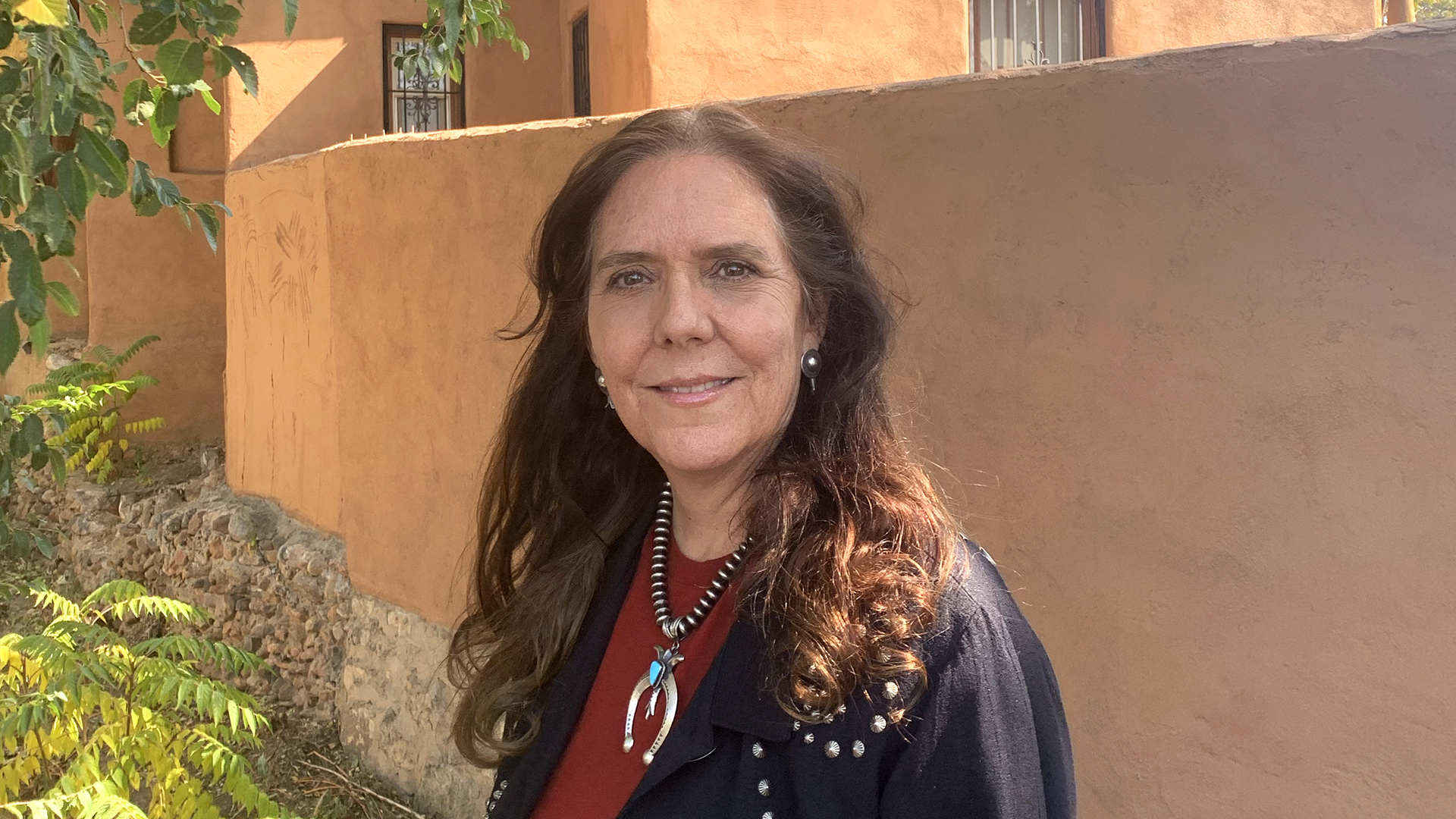One big bubbling stew of flavours, American cuisine has never stopped shifting shape and adding accents, with successive waves of immigrants happily swapping and blending their culinary traditions for centuries. There is, though, one crucial legacy missing from the raucous mix, and that’s ironically America’s own Indigenous cuisine. Native American food, if it’s recognised today at all, usually only materialises on the Thanksgiving table, where it is represented by a token squash or a pumpkin centrepiece.
50 Reasons to Love the World – 2021
Why do you love the world?

“Because when we re-indigenise our foods, we also connect to the land, to our communities, and to our cultures, and this is vital to our health and wellness.” – Lois Ellen Frank, chef, author & food historian
How did such a rich heritage go missing? Blame it, said Dr Lois Ellen Frank, a Santa Fe-based chef, author and food historian, on a simple and increasingly familiar story. “History of course is always told from a specific perspective,” she said. “And America’s colonisers simply erased Native culture from the story of the Americas. If we told the tale from a Native American perspective, it would be entirely different. And now it’s time to tell that story, when there is a new consciousness and people want to know where their food really comes from.”
Frank, a woman dedicated to one very focused mission, is intent on recovering what has been lost.
The daughter of a European and Native American mother, from the Kiowa tribe, and an Ashkenazi and a Sephardic Jewish father, Frank helped tend the family garden at their house on Long Island. The result was an epiphany. Helping to harvest and cook from their homegrown pantry, Frank discovered the pure flavours of garden-to-table cooking that grounds her culinary approach today. At the age of 11, she was already selling homemade zucchini bread at a roadside stand. A stint as an advertising food photographer in Los Angeles, following her graduation from the Brooks Institute of Photography in 1985, inspired her to explore her mother’s Native culinary roots and begin researching Native American foodways.
Travelling to Polacco, Arizona, she found a mentor in Juanita Tiger Kavena, one of the first Native cooks to document Hopi cuisine and farming methods. Working with the Kavena family in the early 1990s, she met Walter Whitewater, with whom she now runs catering company Red Mesa Cuisine, and discovered a second group of mentors among the Whitewater elders, who taught her about the Navajo culinary traditions. These hands-on cooking lessons led Frank to academia, where she got a PhD in culinary anthropology from the University of New Mexico in 2001. Her dissertation, Foods of the Southwest Indian Nations helped introduce Native cuisine to a wider audience and won a James Beard Award shortly after its release in 2003.
Now firmly settled in Santa Fe, Frank is a model of unflagging industry. As the chef-owner of Red Mesa Cuisine, which specialises in the revitalisation of Native cuisine, she works alongside Whitewater, recovering ancestral Native ingredients, and often adding a contemporary flourish.
As if running a catering company weren’t enough, she also teaches classes on Native American cuisine at the Santa Fe School of Cooking, and works as an adjunct professor at the Institute of American Indian Arts, where she educates Native students from a wide range of tribal communities about ways of recovering Native dishes. Named a Culinary Ambassador Diplomat with the US State Department and Office of Cultural Affairs, she has travelled globally, from the Ukraine to the United Kingdom, educating people on Native American cuisine.
The irony is we only need that education because we have no idea that we’ve been dining off the Native larder for centuries, without realizing it. Our own most common culinary ingredients, she noted, from chocolate to potatoes, corn, beans, squash, vanilla are based on Native foods that were imported to Europe and spread globally. And those are only the most visible emblems of the original bulging Native larder.
“Where to start?” Frank laughed, rattling off the infinite poetry of Native ingredients. “Cranberries, blueberries, wild cherries, wild carrots, turnips, onions, baby lettuce, venison, turkey, duck, oysters. Wild rice in Minnesota and salmon on the east coast.” All these flourished before the gradual devolution of Native cuisine in the mid-1800s when the Natives were relocated, plucked from their homelands, and reduced to meagre government rations: flour, lard, coffee.
That focus on Native foodways is the muse for Frank’s most recent project, a cookbook in the works titled The Magic Eight. In some ways a culmination of her passionate journey, the book is an attempt to pay homage to the core ingredients of Native cuisine: corn, beans, squash, chilli, tomato, potato, vanilla and cacao. These, she argues, were the crucial foods buoying pre-contact Native cuisine in the Americas.
But recovering the ingredients alone isn’t enough. Frank is also focused on retrieving what she refers to as Native cooking “technology”. Lately, she has presented virtual lectures at a variety of universities, including Harvard, focusing on that lost technology. “How did the Natives make tortillas? They invented the process of soaking corn in ash and grinding it down into flour.” Native cuisine, she stressed, is a kind of dance based on a profound understanding of the ecosystem: when to plant; when animals migrate; when its best for seasonal composting. “It’s an Indigenous science,” said Frank, “called Traditional Ecological Knowledge, or TEK, which perpetuates the wisdom of the ancestors that was handed down through generations, via traditional songs, stories and beliefs.”
You may also be interested in:
• Does authentic Mexican food exist?
• The rebirth of America’s forgotten tea
• How rice shaped the American South
Currently, the pandemic has put a hold on Frank’s recent collaboration with Santa Fe restaurants, where she is helping them devise Native-based signature dishes. But her virtual cooking classes are growing in popularity, and her work with the New Mexico Department of Health, drawing on ancestral Native diets as a basis for health and wellness in local communities, is perfectly pitched for the times. In the end, she laughed, this is all a return to the past, to an understanding of what we almost lost and the need more than ever to regain, and in some instances revitalise.
—
Dr Frank’s favourite recipe
Among one of Frank’s favourite recipes is her chocolate and piñon (pine) nut torte, a signature dish for the feast days of the Indian Pueblos of New Mexico.
Chocolate & Piñon Nut Torte
(© By Lois Ellen Frank, PhD)
The Feast Day is one of the biggest celebrations of the year among the Indian Pueblos of New Mexico. Each Pueblo honours their own patron saint on a different day. After the gathered groups attend mass in the morning, they hold a procession on the Santa Fe plaza where an altar houses their patron saint. Throughout the day, dressed in ceremonial clothing, they perform ancient traditional dances. Members of the Pueblos, relatives, visitors and tourists are welcome (though each Pueblo has different rules, so be sure to check with the specific Pueblo you are visiting for guidelines on dress and ethics if you plan on attending).
After mass, many of the women return home to set up for the day’s feast that they have been preparing for, in most cases, for days. On each table is a variety of salads, stews, meats, homemade breads, and of course, desserts – both modern as well as traditional – like the piñon nut torte.
This recipe is my adaptation of some of the tortes I sampled at different Pueblos, and I serve it a lot in my catering company, Red Mesa Cuisine. I like to serve it with two sauces, a peach sauce from locally grown peaches from the Velarde Family’s farm and a hand-harvested prickly pear fruit syrup from C&J Farms. You can decorate the entire torte and set it out with the sauces for a buffet, or slice it and plate it individually for your guests. Either way, it’s a wonderful dessert.
1 cup raw piñon nuts (pine nuts), (pecans may be substituted)
2 tablespoons blue cornmeal
2 tablespoons unsalted butter
9 ounces semi-sweet dark chocolate
6 egg yolks
¾ cups granulated sugar
1 teaspoon pure vanilla extract
¼ cup confectioners’ sugar, for decoration (optional)
2 tablespoons blue cornmeal, for decoration (optional)
Grease and flour a 9-inch round cake pan. Preheat the oven to 350F (177C). In a food processor, grind the piñon nuts to a very moist nut butter. This may take several minutes. Add the blue cornmeal and blend again for about 30 seconds, just long enough to combine.
In a double boiler over medium-high heat, melt the butter and chocolate together, stirring occasionally so that they melt and blend together evenly. Add to the piñon mixture in the food processor and blend about 1 minute until smooth.
Beat the egg yolks, sugar and vanilla together in a bowl, and add to the other ingredients in the food processor. Using the pulse setting, slowly blend again until smooth. Do not over mix or the oil from the nuts will begin to separate. The mixture should be smooth and moist. Always add the egg mixture last, otherwise, the eggs will curdle from the heated chocolate.
Spoon the batter into the prepared cake pan and pat down with your fingers until evenly spread. This is a thick batter. I use a spatula to press it down evenly or a piece of paper towel pressing down lightly with my hands. Bake for approximately 14 to 16 minutes, depending on your oven (convection works well for this torte) or until the cake looks cooked on the top. Use a toothpick or skewer to make sure it is cooked all the way through. Remove from the oven and place on a wire rack to cool before decorating. This is a dense torte and to me it resembles dense, very moist brownies. If you desire a crisper torte, you can cook it slightly longer.
When the torte has cooled, after 20 to 30 minutes, remove it from the pan, and then be creative for the decorating process. You can do individual stencils on each slice or decorate the entire torte. To make the south-western motif pictured, cut a stencil out of cardboard. First dust the cake with confectioners’ sugar using a medium sieve, lightly tapping the sides and moving it in a circular motion around the surface of the torte. Then carefully holding the stencil as close to the torte’s surface as possible without touching it and sieve the blue cornmeal over the exposed areas. Carefully remove the stencil without disrupting the design. For a finishing touch, place a few piñon nuts at the corner of each stencilled triangle.
Serves 12 to 14.
—
Join more than three million BBC Travel fans by liking us on Facebook, or follow us on Twitter and Instagram.
If you liked this story, sign up for the weekly bbc.com features newsletter called “The Essential List”. A handpicked selection of stories from BBC Future, Culture, Worklife and Travel, delivered to your inbox every Friday.



























